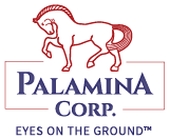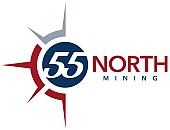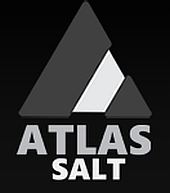 Kingfisher Metals begins RAB drilling at Goldrange
Kingfisher Metals begins RAB drilling at Goldrange
2022-05-30 09:05 ET – News Release
Mr. Dustin Perry reports
KINGFISHER COMMENCES RAB DRILLING PROGRAM AT GOLDRANGE PROJECT
Kingfisher Metals Corp. has commenced rotary air blast (RAB) drilling at the 100% owned 511 km2 Goldrange Project. Goldrange is located approximately 25 km south of the town of Tatla Lake in the Chilcotin region of Southwest British Columbia.
Highlights:
- The Company plans for a 35-day rotary air blast (RAB) drill program to test the Day Trip, Langara, and Standard zones. Production with the RAB drill averages one hole per day with a depth capability of up to 100 m.
- Proposed RAB holes at the Day Trip Zone will test several targets where highly anomalous geochemistry (up to 20.1 g/t Au in subcrop and up to 8.3 g/t Au in talus fines) coincides with very high IP chargeability (up to 97 mV/V) and conductivity.
- At the Langara Zone, planned holes will target below a historical adit and sheeted quartz-sulfide veins mapped on surface. Rock samples at Langara grade up to 60.4 g/t Au, 1500.1 g/t Ag, and 6.8 % Cu.
- Results from backpack drilling in 2020 at the Standard Zone of 10.84 g/t Au over 6.9 m will be followed-up with RAB, which will also target the Standard adit downslope.
Dustin Perry, CEO states “We are excited to be back at Goldrange for an expanded 2022 discovery-focused drill program. Initial RAB drilling will test high quality, shallow targets at the Day Trip, Langara, and Standard Zones, which have been substantially de-risked through structural mapping, IP geophysics and backpack drilling. The RAB drill provides us with a low-cost drill option for near-surface targets as an initial pass prior to diamond drilling.”
About Goldrange
The 511 km2 Goldrange Project spans over 43 km along a complex structural zone within the Yalakom Gold Belt in southwest British Columbia. Goldrange was acquired to cover a broad area of widespread anomalous gold mineralization in streams, soils, and rocks. In 2021, Kingfisher completed the first-ever diamond drill program on the property which focused on approximately 10% of the Cloud Drifter Trend – the most advanced target on the property that includes the Cloud Drifter, Langara, Standard, Essential, and Waterfall Zones. Initial results returned highlights of 73.4 g/t Au over 1 m, 6.9 g/t Au over 9 m and 18.7 g/t Au over 2 m. Widespread anomalous gold mineralization was intercepted throughout the area of drilling which spanned ~600 m by ~350 m and tested over 550 m of vertical extent.
The RAB drilling program in 2022 is focusing on shallow targets at the Day Trip, Langara, and Standard zones. The diamond drilling program in 2022 will focus on the lower elevation areas of the Cloud Drifter Zone and is scheduled to begin in mid-June. Details on diamond drill targets will be announced in future releases.
Day Trip Zone
The Day Trip Zone covers a rounded to flat mountain top approximately 5 km southeast of the Cloud Drifter Trend (Figure 2). The target covers a minimum 900 x 500 m area of geophysical and geochemical anomalism that projects under talus cover on all sides The target is situated between two fault splays rooted in the regional Ottarasko Fault. Intrusive-hosted veins up to 2 m in width occur over an area ~100 m by 400 m. Quartz veins from this area returned grades from below detection limit to 6.7 g/t Au over 2 m. Adjacent to the intrusion is a ~70 m x 90 m area of arsenopyrite-cement breccia in subcrop. Approximately 20% of the subcrop material in this area consists of arsenopyrite-cement breccia and grades from 3.4 to 20.1 g/t Au (see release dated May 13, 2021). Talus fine sampling in 2020 and 2021 outlined a broad area of gold anomalism (greater than 100 ppb Au) over ~100 m x 450 m and grades up to 8.4 g/t Au over the subcrop breccia area. Talus fine anomalies are coincident with areas of gold in outcrop and subcrop that graded up to 20.1 g/t Au. Rock and talus fine geochemistry both yield a strong multi-element signature of elevated As, Ag, Cu, Bi, Te, and Pb associated with Au.
IP surveying was completed in 2021 and consisted of 5 lines spanning 4.2 km (see release dated January 12, 2022). The survey delineated three domains with significant high chargeability values (greater than 32 mV/V), the largest of which is broadly coincident with areas of known mineralization and talus fine anomalies. The strongest chargeability values (greater than 60 mV/V) within the survey area are coincident with high conductivity responses on survey lines 3500, 3600, and 3700. Anomaly 3600E coincides with a 90 x 70 m subcrop of sulfide-cement breccia. The geophysical anomalies are open to the south, north, and southwest as well as at depth. No rock or soil samples have been collected in the western chargeable zones to date.
Proposed RAB drill holes at Day Trip will target multiple at-surface and near-surface coincident geophysical and geochemical anomalies. The proposed holes will drill below mapped mineralization hosted in sheeted veins on surface as well as below a sulfide-cement body mapped in subcrop. The chargeability targets each demonstrate an excellent correlation with known structural features projected to depth, such as faults, intrusive contacts or projection of breccia body. One chargeability anomaly (3600E) does not continue to surface despite a spatial association with surface mineralization. This low chargeability area is interpreted to reflect a loss of sulphide near surface due to oxidation, which is also identified in rocks on the surface.
Langara Zone
The Langara Zone is located at the eastern extent of Cloud Drifter Trend, a ~3 x 2 km gold anomaly. The Langara target is centered on a diorite intrusion that is part of the Bendor suite, emplaced into fossil-rich sandstone of the Cloud Drifter Formation. Quartz-sulfide veins are focused along northerly lithological contacts and easterly dextral-reverse faults. Hydrothermal breccia bodies lie in structural intersection domains and were the focus of hand mining activities in the 1930s. Previous assay results from 2020 work at Langara can be found in the release dated April 14, 2021.
RAB drill targets at Langara were selected from detailed surface structural mapping coupled with surface geochemical results. An IP geophysical survey was not employed at Langara due to the presence of chargeable geology in the background rocks. The principal target at Langara is below the historical adit, which is located in a major structural interference zone between a northerly vein swarm and an easterly brittle fault and shear vein corridor. The planned RAB holes will target both the northerly sheeted veins and easterly shear veins and the Langara adit breccia-style mineralization, projected to plunge steeply to the south.
Standard Zone
The Standard Zone is the site of a historical adit (1930s) and is located on a steep cliff band to the south of the Cloud Drifter Zone. Mineralization occurs along a north-trending fold corridor that projects under cover to the north. Mineralization is focused within gentle to moderately dipping veins as well as sulfide-cement breccia within the fold hinge. The planned RAB hole will target the projection of the ore shoot mined in the 1930s and a backpack hole drilled in 2020, which included 10.84 g/t Au over 6.9 m in breccia (see core photo Figure 10 and release dated April 21, 2021). Drill and surface sampling results have confirmed that arsenopyrite-rich, breccia-style mineralization at Goldrange is associated with the highest-grade gold intercepts.
Future Plans
Diamond drill pad construction is currently underway, and the Company anticipates the arrival of a diamond drill on or about June 10, 2022. Diamond drill targets at the Cloud Drifter Zone will be outlined in future releases.
Qualified Person
Dustin Perry, P.Geo., Kingfisher’s CEO, is the Company’s Qualified Person as defined by National Instrument 43-101, Standards of Disclosure for Mineral Projects, and has prepared the technical information presented in this release.
About Kingfisher Metals Corp.
Kingfisher Metals is a Canadian-based exploration company focused on underexplored district-scale projects in British Columbia. Kingfisher has three 100-per-cent-owned district-scale projects that offer potential exposure to high-grade gold, copper, silver and zinc. The company currently has 85,173,300 shares outstanding.
We seek Safe Harbor.
































